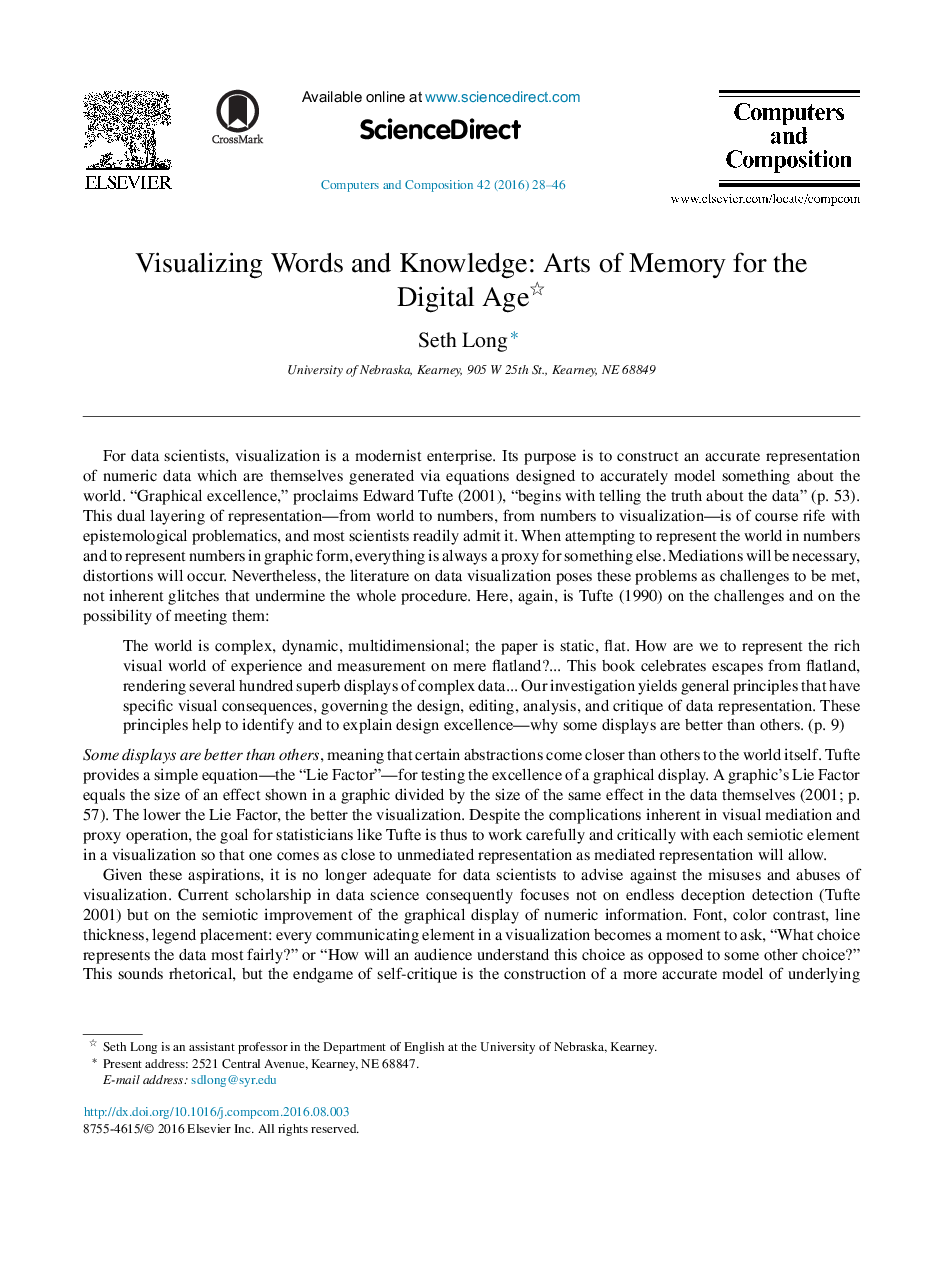| Article ID | Journal | Published Year | Pages | File Type |
|---|---|---|---|---|
| 6834504 | Computers and Composition | 2016 | 19 Pages |
Abstract
This article attempts to revitalize rhetoric's fourth canon, the art of memory. I begin by demonstrating that the canon of memory was traditionally an art by which words and knowledge were remediated into visual, spatial forms, either in the mind or on the page. It was this technique of visualization, I argue, that linked the canons of memory and invention throughout history. I suggest that the field return to visualization as an art of memory. Today, digital tools that visualize words and knowledge are ubiquitous. Framing data visualization as a twenty-first century analog to the art of memory allows us to think about visualization as a tool for invention rather than as a reified representation of data. Using the idea of “text sense,” I present dispersion plots and text networks as examples of visualizations that enable writers to develop a more robust working memory of their texts.
Related Topics
Social Sciences and Humanities
Arts and Humanities
Language and Linguistics
Authors
Seth Long,
